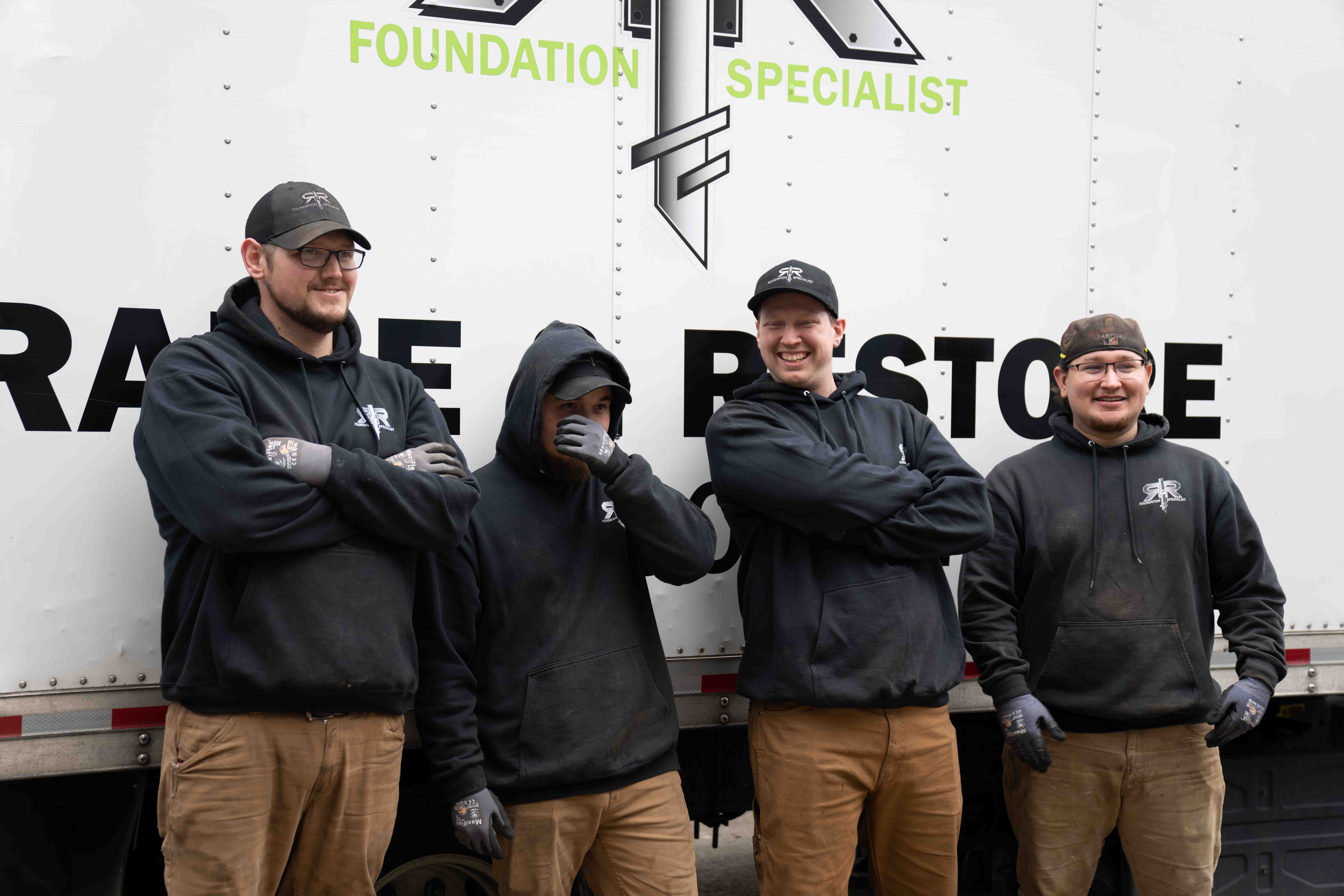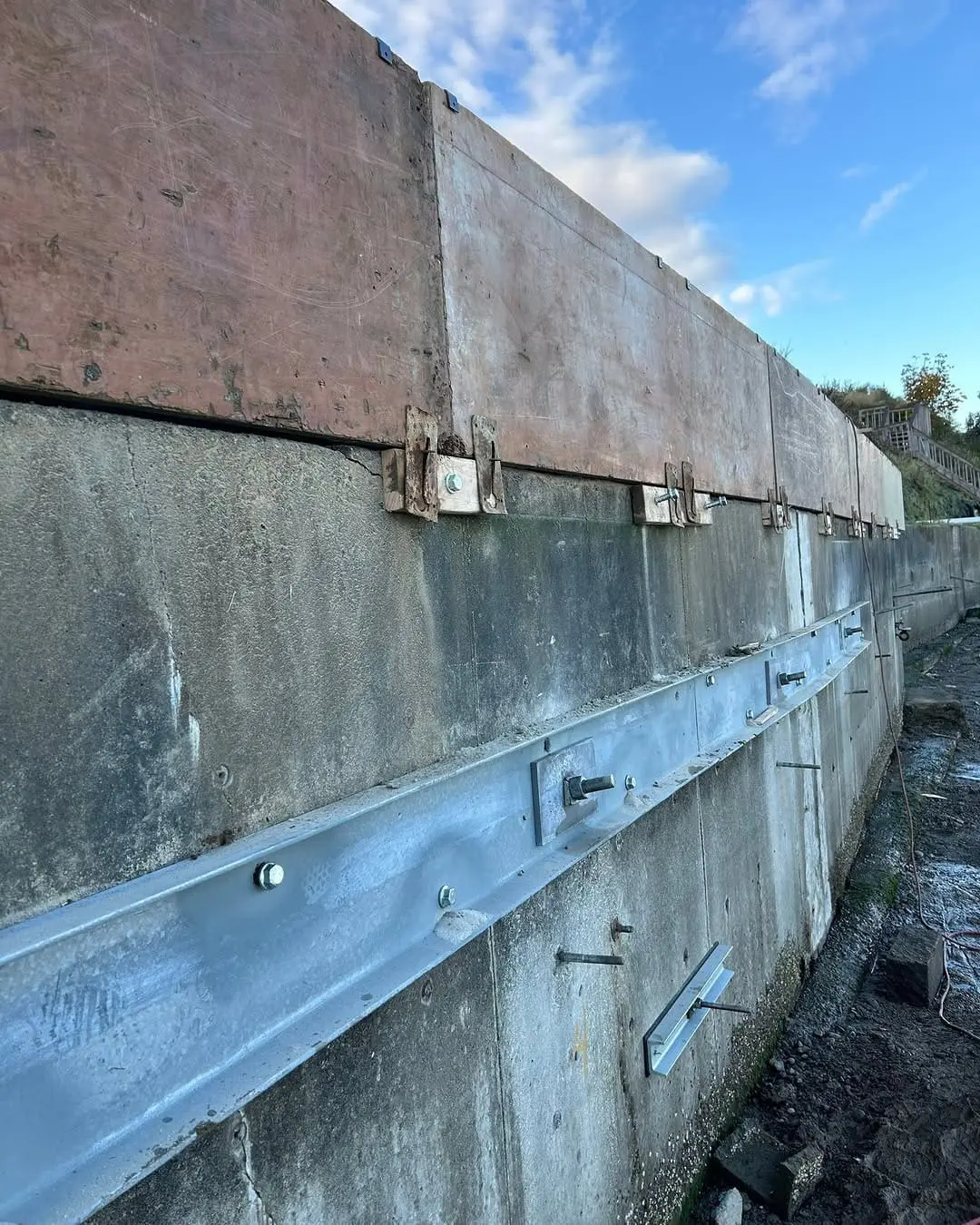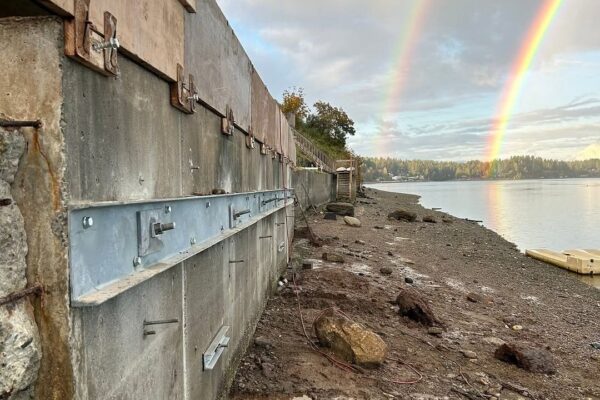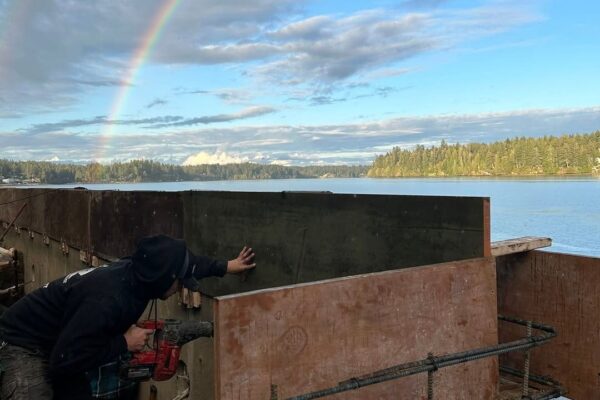Seawall repair is key to keeping your waterfront property safe, and fall and winter are the perfect seasons to tackle it. With calmer waters and a break from the summer rush, it’s an ideal time to get your seawall in top shape before the next storm hits. At R&R Foundation Specialist, we’re ready to help you make the most of these cooler months to protect your property—let’s dive into why it’s the best time for seawall repairs!
1. Better Conditions for Seawall Repair: Stronger Curing and Better Material Performance
When it comes to seawall repair, cooler fall and winter temperatures in Seattle offer the perfect conditions for materials like concrete and sealants to set properly. Unlike the summer heat, which can cause materials to cure too quickly or unevenly, the milder weather allows for a more controlled and durable result. Seawall contractors prefer working in these cooler months, as the temperatures prevent the risk of materials hardening too fast, ensuring a stronger and longer-lasting repair.
Even though Seattle sees plenty of rain, the mild temperatures help prevent freezing, which can halt repairs or cause further damage. With fewer weather-related disruptions, contractors can focus on completing the job with fewer delays, making fall and winter the best time to invest in seawall repairs that stand the test of time.
2. Environmental Benefits of Seawall Repair in Seattle’s Winter Months
Winter in Seattle offers a unique opportunity to complete seawall repairs with minimal environmental disruption. With erosion and sediment runoff generally more manageable during the cooler months, repairs can be carried out without adding to the shoreline degradation that often occurs in spring and summer. By getting repairs done before the spring thaw or heavy rains, you can reinforce your seawall just in time to prevent further erosion when runoff from melting snow or storms hits.
Beavers may be adorable, but they’re the top culprits when it comes to shoreline damage. In the Seattle area, their dam-building and burrowing can destabilize soils and lead to erosion, especially near tidal zones. Fortunately, winter’s quieter season means less plant and animal activity along the shorelines, making it an ideal time to repair seawalls without disturbing local wildlife or sensitive ecosystems. For those in areas with protected habitats, winter repairs are a smart choice for your property and for the environment.
3. Access to More Workable Days and Lower Water Levels
While Seattle winters are known for rainfall, they also bring occasional dry spells and lower water levels, which can create perfect windows for seawall repairs. These breaks between storms give contractors the chance to get out and perform work without the interference of constant rain.
Suppose your seawall is near a lake or waterway. In that case, drier periods may cause water levels to temporarily drop, making it easier to access submerged areas or sections of the seawall that would otherwise be difficult to inspect or repair in the wetter spring months. With fewer interruptions and better accessibility, fall and winter offer more workable days for getting your seawall in top condition.
4. Reduced Demand and Quicker Availability for Scheduling Repair
Winter is the perfect time to get your seawall repairs done if you’re looking for quicker scheduling and less hassle. With fewer projects on their plate, contractors have more availability and can offer more flexible scheduling, meaning less waiting around for your turn. Since there’s less competition for labor and materials, you’re more likely to get faster turnaround times—no long delays like you might experience during the busy spring and summer months. It’s a win-win: quicker repairs and a smoother process all around!
5. Stay Ahead of the Summer Rush, While Enjoying Greater Convenience
Getting your seawall repairs done in the fall or winter means you can stay ahead of the summer rush while enjoying a lot more convenience. With fewer tourists and less outdoor activity, there’s less interference with your daily routine, so you won’t have to deal with the extra traffic or noise around your property.
Coordinating repairs is also easier, as you won’t have to juggle around social events or family gatherings. Plus, by getting the work done well before the busy summer season kicks in, you can relax knowing your property is ready to handle whatever the season throws at it—without the stress of last-minute repairs.
6. Fall and Winter Have the Best Rainbows in Seattle—Perfect for Scenic Shots!
Here’s a fun bonus reason to consider fall and winter for your seawall repairs: the best rainbows in Seattle happen during these months! With Seattle’s frequent rainstorms, the cooler seasons bring out vibrant rainbows, often paired with stunning sunsets or dramatic skies.
Whether you’re enjoying your newly repaired seawall or just taking a moment to admire the view, fall and winter offer some of the most picturesque backdrops for those perfect scenic shots. So, while we’re hard at work fixing your seawall, you might just get the opportunity to capture a breathtaking rainbow that adds a little extra magic to the moment!
Choose R&R Foundation Specialist for Your Seawall Repair
Our team at R&R Foundation specializes in seawall repairs designed to protect your waterfront property in Seattle, Tacoma, Everett, Olympia, and the greater Washington Area. Our experienced team uses top-quality materials to ensure your seawall is strong and durable, ready to withstand the elements.
Don’t wait for the damage to get worse, take action now to safeguard your home from seasonal storms. Whether you need foundation repair or help with water damage protection, we’ve got you covered. Find seawall FAQs, hear from our happy customers, and follow us on Facebook or Instagram to stay up to date on our latest projects.
Let us help you keep your seawall safe and secure! For more information or to schedule a free inspection, call us or contact our team today.






